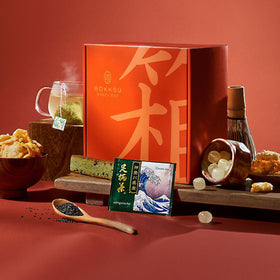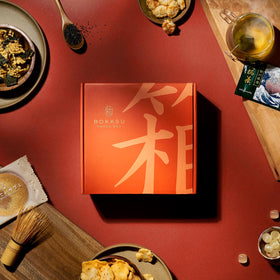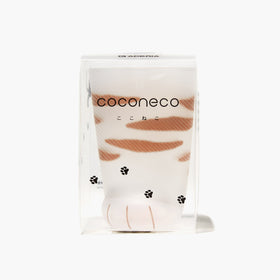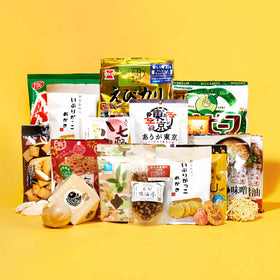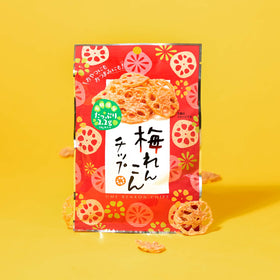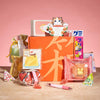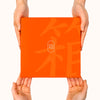Furin 風鈴: Discover Japan’s Soothing Summer Wind Chimes
What Are Furin? Understanding Japanese Wind Chimes

Furin are traditional Japanese wind bells that hold a special place in the heart of summer. The word "furin" literally means "wind bell," and these ornaments are often made of glass, metal, or ceramic. Each one features a small paper strip called a tanzaku hanging below it. As the wind moves and catches the tanzaku, it sets the clapper in motion, creating a soothing chime that seems to echo the breeze itself. Traditionally hung under the eaves of homes, furin wind chimes are more than simple ornaments as they are believed to offer protection by warding off evil spirits. Their gentle tickling sound drifting through the air stirs nostalgic memories of summer festivals, childhood memories, and the fleeting charm of the season.
The History and Origins of Furin

The history of Japanese wind bells begins in ancient China, where wind chimes were used as fortune-telling tools called senfutaku. These bells were hung from bamboo stalks in forests and the soft sounds they produced when the wind blew were believed to carry messages about good or bad fortune. This fascinating practice made its way to Japan during the Heian period, where it took on new meaning within Buddhist temples. There, the bells were hung to ward off evil spirits and to invite tranquility, their gentle sounds enhancing the sacred atmosphere of temple grounds.
Over time, the use of furin spread beyond temple grounds. Nobles in the Heian period started hanging these bells on their porches as protective charms from misfortune. By the Edo period, this tradition had become a cherished part of daily life. Japanese wind bells evolved into beautiful glass or metal ornaments, often hand-crafted and painted, and were widely hung in homes during the summer months. Today, furin remain a beloved symbol of the season, blending ancient spiritual roots with everyday life in Japan.
The Symbolism Behind Japanese Wind Chimes

Japanese wind chimes carry deep cultural significance that goes far beyond their appearance. For many Japanese people, the soft, soothing sound of furin signals the arrival of summer. Traditionally believed to ward off evil spirits, these chimes were thought to protect homes, especially when strong winds blew through. At the same time, their gentle ringing is seen as a harbinger of good fortune, bring peace and calm to those who hear them. Hanging a furin signals the arrival of summer and brings a sense of peace and hope, blending the beauty of nature with ancient beliefs in a way that's uniquely meaningful in Japanese culture.
== https://www.bokksu.com/collections/bokksu-exclusive-box-and-bundle/products/treat-yourself-box== ==https://www.bokksu.com/collections/bokksu-exclusive-box-and-bundle/products/bokksu-ramen-box== ==https://www.bokksu.com/collections/bokksu-exclusive-box-and-bundle/products/the-kawaii-gift-box==
Traditional Materials Used in Furin

Traditional furin wind chimes are crafted from a variety of materials, each offering its own unique sound and charm. At their core, all furin consist of three main parts: the bowl or bell-shaped exterior called the gaiken, the clapper inside known as the zetsu, and the tanzaku, which are colorful strips of paper that hang beneath and flutter gently in the summer breeze. Ceramic wind chimes, with their earthy tones and solid feel, create a warm, mellow ring, while metal wind chimes, often made from bronze or copper, produce clear, resonant tones. In fact, during the Heian period, copper and bronze were the most common materials for these chimes, prized for their durability and spiritual significance.
As time went on, the materials and styles evolved. Venetian glass wind chimes gained popularity in the 19th century, bringing a new level of artistry and delicacy to Japanese wind bells. By the early 20th century, iron wind chimes became more common, appreciated for their stronger, more metallic sound. Today, glass wind chimes are the most popular type, often hand-painted from the inside to protect the artwork from peeling or wear. These glass furin produce a soft, clear tone that perfectly captures the lightness of a summer breeze, making them a beloved part of Japanese homes during the warmer months.
Where to See Wind Chimes in Japan

For those who want to experience the magic of Japanese wind bells up close, summer is the perfect time to visit festivals and temples where furin take center stage. One standout event is the annual wind chime market at Kawasaki Daishi Temple, held every July. This lively celebration features around 900 unique varieties of wind chimes from 50 different regions across Japan, all showcasing intricate designs and regional craftsmanship. Tokyo’s Senso-ji Temple, the city’s oldest, also hosts seasonal wind chime displays and markets that transform the temple grounds into a shimmering, melodic wonderland filled with color and sound.
Beyond these festive gatherings, wind chimes can be discovered in more tranquil settings as well. Many temples and shrines across Japan set up stunning summer installations in their scenic gardens, where furin sway gently in the breeze. The soft, melodic tones of the chimes blend harmoniously with the rustle of leaves and the distant murmur of water, creating a peaceful, almost meditative experience.
The Sound of Summer: Why Furin Are So Beloved

The soft, cooling sound of furin is like the soundtrack of a Japanese summer, gently weaving through the air during the hot summer months. Their delicate tinkling creates soothing sounds that instantly bring a sense of calm and refreshment, offering a brief sensory relief from the intense heat. For many, the gentle chime of these wind bells evokes a warm wave of nostalgia, bringing back memories of childhood and summer festivals. It’s a small, simple sound, but one that holds the power to transport people to a place of peace and seasonal joy amidst the sweltering days.
==https://www.bokksu.com/collections/bokksu-exclusive-box-and-bundle/products/japanese-savory-snack-box== ==https://www.bokksu.com/collections/bokksu-exclusive-box-and-bundle/products/japanese-fruits-gummy-box== ==https://www.bokksu.com/collections/all/products/the-happy-hour-gift-box==
Furin in Art and Pop Culture

In modern Japan, furin have become meaningful symbols woven into art and pop culture, appearing in anime, movies, literature, and even summer postcards. Their tinkling sound often marks the arrival of summer, setting the scene with a sense of calm and nostalgia. In anime and films, furin are often used to signify the summer season, enhancing moments of solitude, romance, or memory, and beautifully capturing the fleeting passage of time and the tenderness of cherished memories. Literature often uses them as metaphors for transience, wishes and prayers, while postcards commonly feature furin alongside images of sunflowers, fireworks, and cicadas to instantly evoke the atmosphere of a Japanese summer.
How to Buy or Make Your Own Furin

For those looking to bring home the soothing charm of Japanese wind chimes, buying one is a beautiful and meaningful choice. Handmade furin can be found in traditional shopping districts like Asakusa in Tokyo or the historic alleys of Kyoto, where artisans sell delicate, hand-painted wind chimes made from glass, metal, or ceramic. For a more interactive experience, visit Shinohara Furin Honpo in Tokyo, a family-run workshop where you can not only buy but also paint and assemble your own Japanese wind chime. Choosing a furin that matches your taste means bringing home not just a souvenir, but a source of natural sounds and calming charm to enjoy all summer long.
For those feeling creative, making your own furin is a rewarding project that lets you connect more deeply with this charming tradition. A basic furin consists of three parts: a small bowl-shaped object like a glass or ceramic cup for the bell, a clapper (which can be made from wood or metal), string, and a colorful tanzaku, or paper strip, that catches the wind. You can paint your furin by hand, using waterproof paints to decorate it with your favorite designs or seasonal imagery. Hang it near a window or porch, and let the breeze bring it to life.
Displaying Furin at Home: A Seasonal Ritual

In Japanese homes, furin are often displayed where the breeze can catch them. Common spots include balconies, verandas, and windows—places where the wind naturally flows, allowing the furin to dance and chime softly throughout the day. Whether it’s a delicate glass piece or a classic bronze wind chime, the goal is to capture the wind’s natural movement and create a peaceful atmosphere. Many families place them just outside sliding doors or beneath the eaves, where the fluttering tanzaku sways with each gust, filling the home with a gentle reminder of summer’s quiet charm.
Modern Takes on a Traditional Sound

Japanese wind chimes, or furin, continue to enchant with their timeless charm, but they’re also evolving in exciting ways. Today’s artisans and designers are breathing new life into this summer tradition, experimenting with modern shapes, innovative materials like recycled glass or resin, and even integrating minimalist or abstract designs that speak to contemporary tastes. Many creators infuse their furin with meaningful themes and personal storytelling, all while staying true to the spirit of their cultural roots. From classic Edo-style designs to strikingly modern interpretations, furin remain an enduring symbol of summer’s gentle breeze and Japan’s deep connection to nature and tradition.
Experience the soothing charm of Japanese summer with Bokksu Boutique’s upcoming Summer Collection, showcasing exquisite furin wind chimes. There’s no need to travel far to enjoy this timeless tradition as our thoughtfully curated selection of furin, along with delicious snacks and refreshing drinks, brings the spirit of summer in Japan right to your doorstep. Check out Bokksu Boutique and let us transport you to a Japanese summer!
==https://www.bokksu.com/collections/all-bokksu-boutique-items/products/classic-bokksu-seasons-of-japan== ==https://www.bokksu.com/collections/all/products/bokksu-the-japanese-tea-box== ==https://www.bokksu.com/collections/bokksu-exclusive-box-and-bundle/products/cat-lovers-box==
Author Bio




